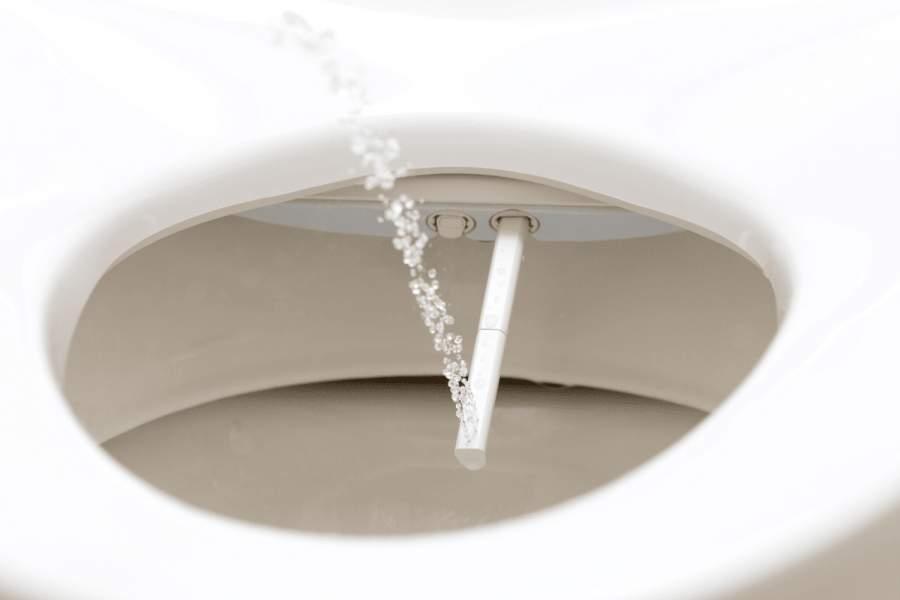The water pressure of your bidet is one of the most crucial elements for a pleasant yet effective clean.
Too high and you’re in for a painful shock, and too low, well… suddenly the bidet becomes pointless.
In this article, I cover the most common bidet pressure issues (and how to solve them). Click on any of the following links to jump to the relevant section:
Ready? Let’s dive right in.
The water pressure on my bidet is too high
“Ouch! That hurts!”
Not what you want to be thinking while sitting on the toilet.
High water pressure is a fairly common problem with non-electric bidets because they’re powered by your homes water pressure. It’s a less common problem with electric bidets, but I’ve still included some solutions for them nonetheless.
So, what can you do if your bidet water pressure is too high?
First, check you’re using the lowest pressure setting on the bidet. Then reduce the water flow to the bidet by installing a shut-off valve or by partially closing the water supply tap. If that doesn’t work, consider switching from a non-electric bidet to an electric model with a lower default pressure.
Want more detail? Read on for nine different ways to fix a bidet with high water pressure.
Check your bidets pressure settings
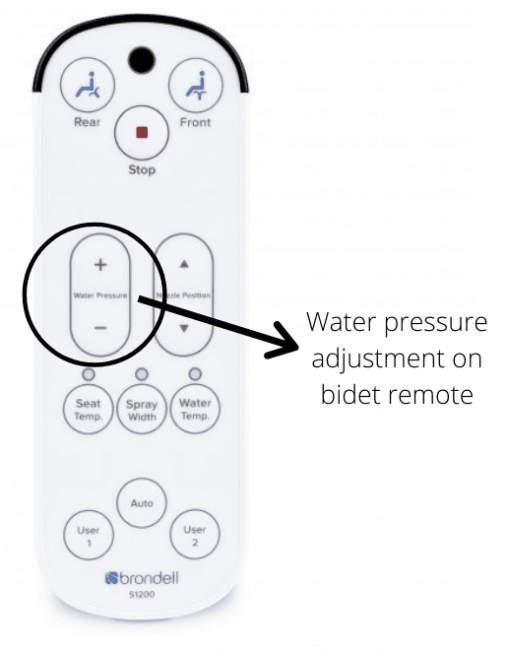
First of all check your bidet pressure settings.
Pretty much all bidets, electric or non-electric, allow you to adjust the water pressure between several different levels.
Set the pressure to the lowest setting and see if it’s still too high.
Electric bidets will tend to reset to a default pressure setting after use, so you’ll have to change it each time you use the bidet. A way around this is to get a bidet with user presets.
The user presets feature allows the bidet to remember your favourite settings so the bidet will automatically adjust to your chosen pressure setting each time you use it.
Partially shut off the water supply to your bidet (non-electric)
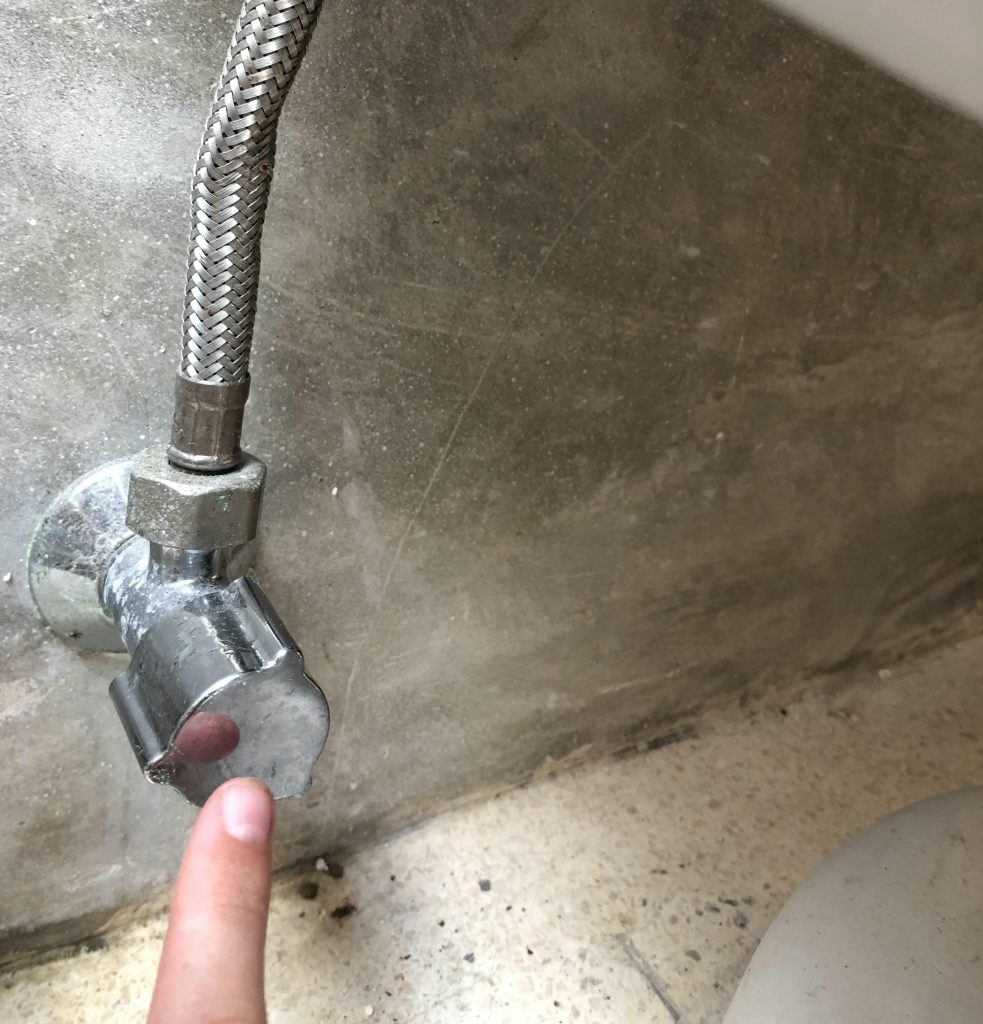
Non-electric bidets feed off your home’s water pressure and it’s not uncommon for them to be too powerful.
One way to combat this is to partially shut off the water supply to the bidet.
Partially shutting off the water supply valve will reduce water flow to your bidet and result in a less strong spray.
It’s the same concept as turning the tap halfway off to slow the flow of water.
The ‘tap’ will be located behind your toilet.
The only downside to doing this is that you are also turning down the water supply to your toilet, so the tank will take longer to refill.
This might not be a problem if the toilet isn’t used often, or if you’re only shutting the valve a small bit. But if you’re reducing the water flow by a lot and multiple people use the toilet, it might become a problem.
In that case, you need to install a shut off valve (see the next section).
Note this solution will only work for non-electric bidets
Install a t-adapter with a shut-off valve (non-electric)
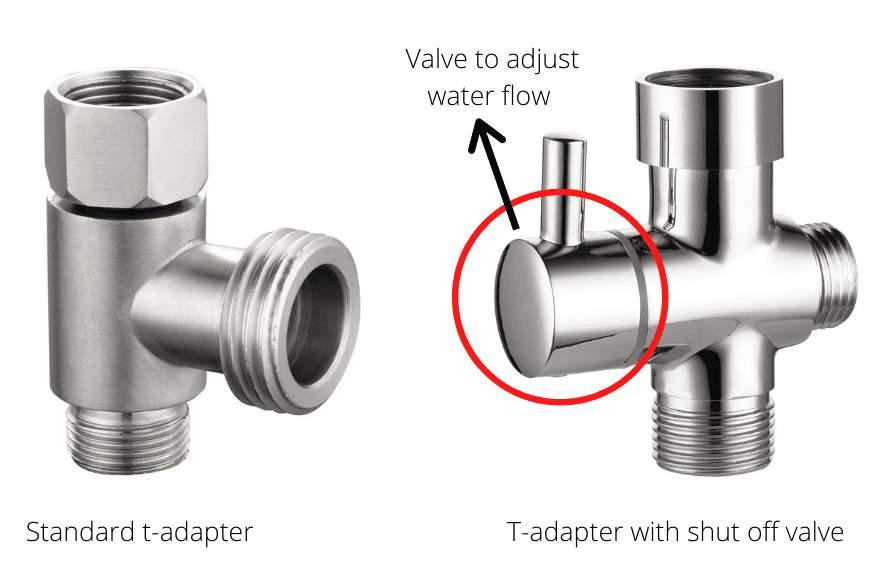
If you don’t want to mess with the water supply to your toilet, a shut off valve is the perfect solution.
It’s a t-adapter with an in-built pressure regulator. The regulator works by restricting the water flow to the bidet.
It only affects the connection going to the bidet. The water flow to the toilet isn’t affected.
The less water you allow to flow through to your bidet, the lower the pressure will be.
If you think you need one of these, it’s worth contacting the manufacturer of your bidet. They might be able to send you one. I know LUXE offer to send one of these modified t-adapters if you ask.
An added bonus is that these shut off valves allow you effectively turn the bidet off when you’re not using it, which can stop children and mischievous guests messing around with it and soaking your bathroom.
Note this solution will only work for non-electric bidets
Check the spray mode you’re using (electric)
Some electric bidet models come with what’s called an enema spray mode. Other names for it include vortex mode, strong wash and turbo wash.
It’s a really high pressure spray aimed to get your bowels moving.
Great if that’s that you want, but if you’ve turned it on by accident it’s going to feel very strong.
Check you haven’t activated a stronger spray mode than you meant to.
Other bidets also offer gentler spray modes like ‘soft rear cleansing’ or ‘wide front spray’. If the normal spray mode is too strong for you, check if your bidet offers a gentler one. If there’s a kids mode try that out too because it tends to have a lower pressure.
Note only electric bidets offer different spray modes so this isn’t applicable for non-electric bidets
Adjust the nozzle (handheld bidet sprayers)
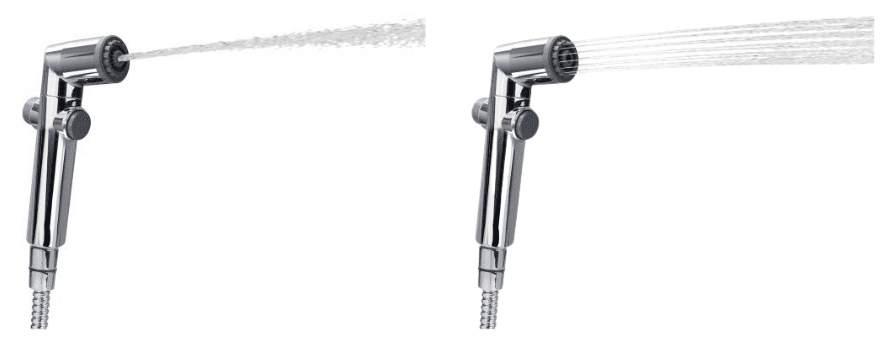
You know how your showers has different spray patterns to pick from? There’s the high pressure spray that comes out of three holes and the soft spray that uses all the holes
Most hand-held bidets have the same thing.
Check if you can adjust the spray pattern by twisting the spray head or via a small lever somewhere on the bidet. The more holes the spray uses, the softer it will feel.
Check your home’s water pressure
It could that your whole home’s water pressure is too high.
If your bidet has suddenly started producing too much pressure, it’s indicative that something has gone wrong with the supply.
High water pressure probably won’t cause any immediate issues for your home, but over time it can lead to leaks. Normal water pressure for a home is between 30-80 PSI, with 40-60 being ideal. Above 80 PSI is too high.

You can easily check your water pressure using a pressure gauge, if it’s above 80 you can fix this by installing a regulator which will monitor and adjust your home’s water pressure as needed to keep it within the required range.
Here’s a useful guide on checking the water pressure in your home.
Reducing your home’s water supply will not only fix your bidet pressure, it will also reduce your water bills!
If you already have a regulator and have noticed problems with the water pressure, it may need to be adjusted or replaced. Regulators typically have a life span of 7-12 years.
If you think this is the source of your troubles, I recommend contacting a trusted plumber for more advice.
Contact the manufacturer
If you’ve tried everything and the pressure problem isn’t getting any better, I suggest contacting the manufacturer, especially if you have an electric bidet.
Electric bidets aren’t known for having powerful sprays so it’s possible the bidet is malfunctioning.
Flush the toilet while you use the bidet (a temporary solution)
This is a great quick fix if you’re waiting for a shut-off valve to come in the mail or for a replacement bidet to turn up.
A temporary solution to high water pressure is to flush the toilet just before you turn the bidet on.
This way the water flow will be split in two, half will go to your toilet and half will go to the bidet resulting in a lower pressure spray.
Get an electric bidet
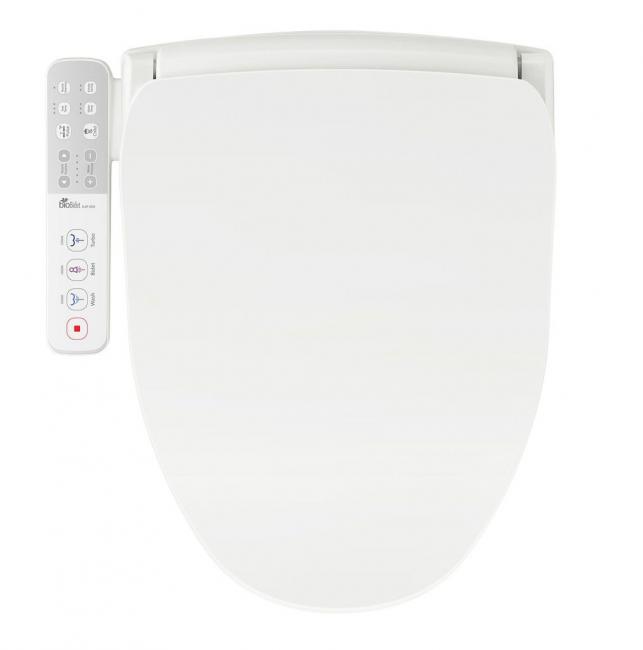
Non-electric bidets are well known for being the highest pressure bidets on the market because they feed off your homes water pressure.
High water pressure is normally a good thing because it means you can have nice showers and you bath fills up quickly.
But it’s not so nice when that water is aimed at your backside.
If you find the water pressure strong even after reducing the water flow, then it could be time to consider an electric bidet.
Electric bidets are lower pressure by default because they produce their own pressure. A small little machine is never going to produce enough pressure to blast you off your seat!
A basic electric model will set you back around $200, so they’re by no means cheap but you’ll have a comfortable experience and you get extra features like warm water, a heated seat, and potentially an air dryer.
The water pressure on my bidet is too low
I’m not sure what’s worse, a trickle-y shower or a trickle-y bidet?
How are you supposed to get clean when the bidet water barely even reaches you? It needs to to better than a dribble.
So what can you do when your bidet water pressure is too low?
First, check you’re using the highest available pressure setting. Then check that the water supply to the bidet isn’t restricted by a partially shut water tap or a closed flow restrictor. You should also clean the spray nozzles and the in-built mesh filter, and replace any external filters.
Want more detail? Read on for ten different ways to fix a weak bidet spray.
Check your pressure settings / spray mode
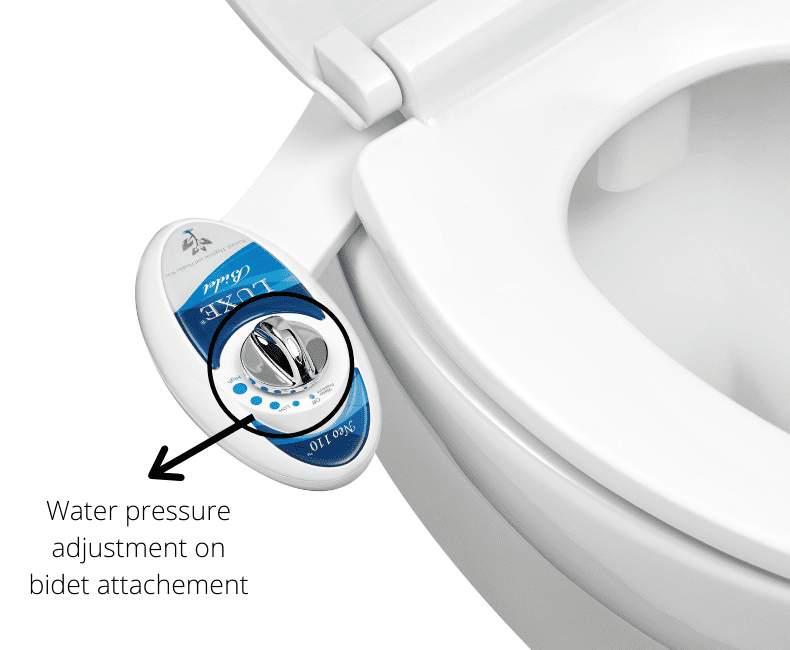
First off, check the pressure settings on the bidet.
Most bidets, electric and non-electric, allow you to adjust the pressure. Start by making sure it’s on the highest setting.
You can also check the spray mode you’re using and ensure it’s not one with a lower pressure by default. For example, any wide-spray modes will lower the water pressure.
Most electric bidets will reset to a default pressure setting after each use. To get round this, opt for a bidet with user presets.
These bidets can remember the specific settings you want, and will adjust automatically each time you use the bidet.
Adjust the spray nozzles (for hand held bidets)
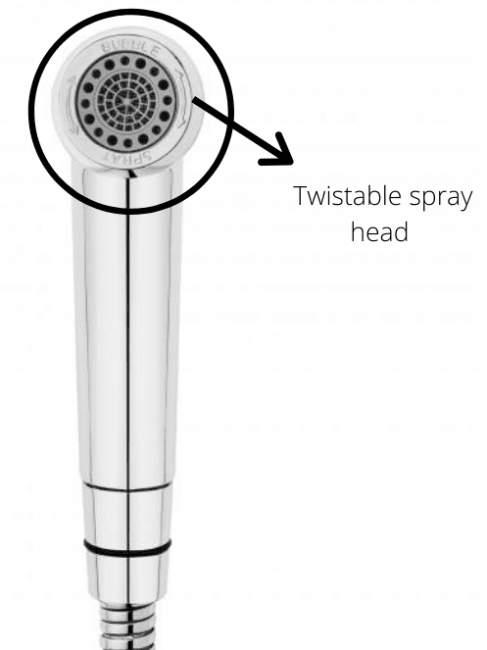
Does your shower have different spray patterns?
Most hand held bidets will too. A strong, targeted spray and a softer, wider spray.
If you’re using the bidet on the soft spray setting, try twisting the head head of the bidet, or look for a lever somewhere on the bidet. This will change the spray pattern to the stronger one and might fix your pressure problem.
Check the water supply to the bidet
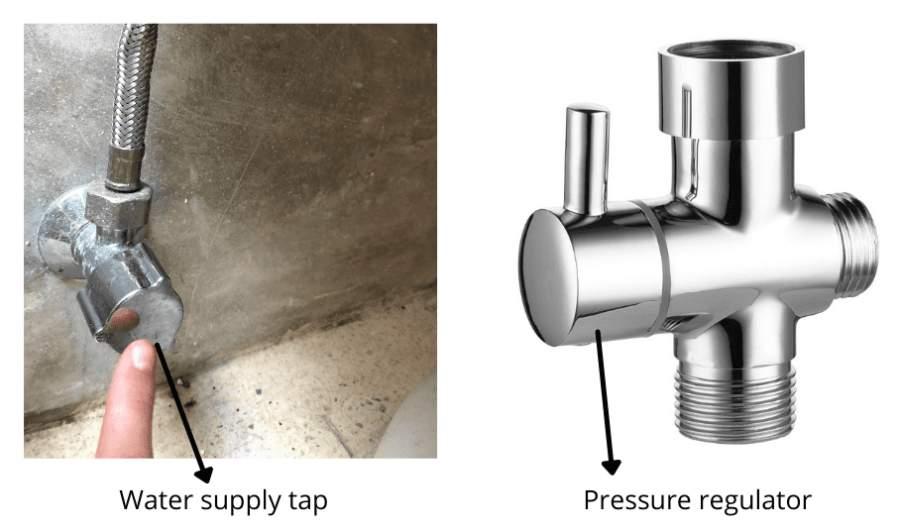
If the pressure is still too low make sure your water supply is fully on at the wall.
If you’ve accidentally knocked the fitting and partially shut the water supply off this can have a big effect on the water pressure in your bidet.
The water supply tap will be sticking out of the wall behind your toilet.
If you have a t-valve with a pressure regulator make sure this is fully open too. A closed pressure regulator will reduce the water flow to the bidet.
And any reduction to the water that flows to the bidet will have a knock on effect on the water pressure.
The pressure regulator will look like a lever on your t-adapter thats not connected to anything.
Check for leaks
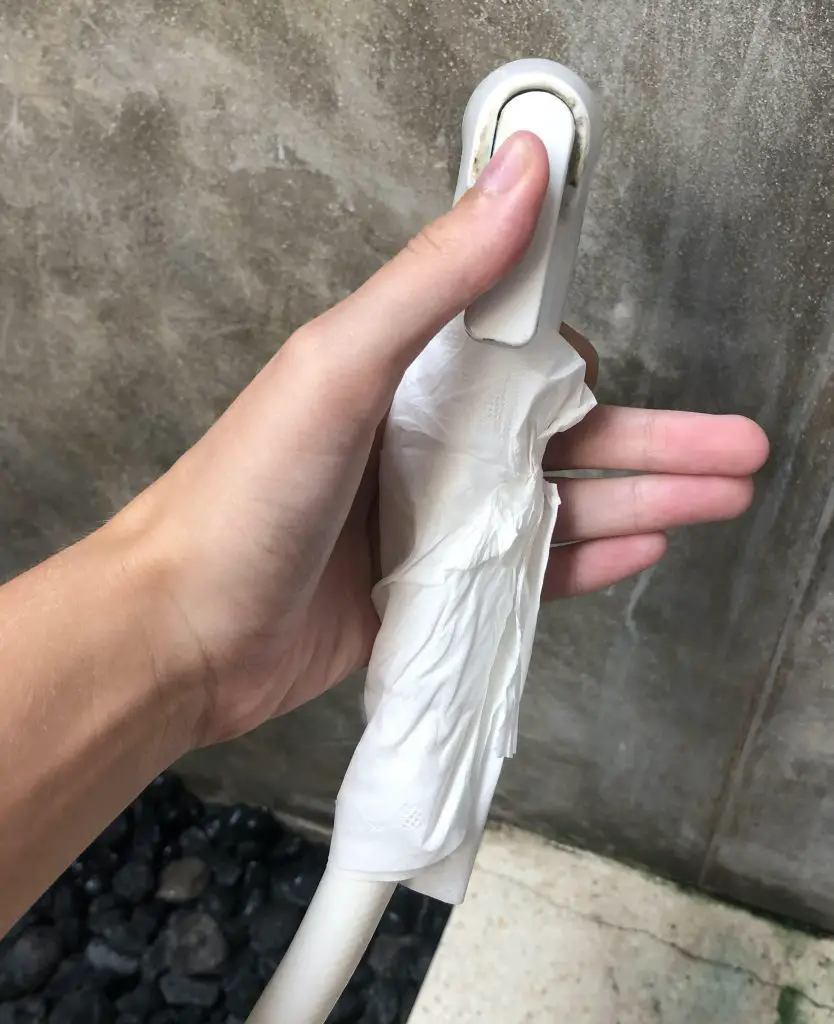
Leaks are another problem that can cause low water pressure.
Put some toilet paper around any joints where there could be a leak and run the bidet. If the toilet paper becomes wet, you’ve found a leak.
Make sure to get all the connections that run to your bidet, even if they’re hidden in a cupboard.
Clean the spray nozzles
Next, clean the spray nozzles to make sure they’re not clogged.
Hard water build-ups or a few small particles in the spray nozzles will make it hard for the water to push through and therefore result in a lacklustre performance.
Even if the nozzles don’t look clogged, they still could be. Clogged nozzles are more likely to occur if you’re not using a bidet filter, if you live in an area with naturally hard water, or if your bidet doesn’t self-clean the inside of the nozzle.
To clean a bidet spray nozzle:
- Run a cleaning cycle.
- Manually extend your nozzles and unplug the bidet while they’re extended. This will stop them retracting while you’re trying to clean them.
- Remove the nozzle tips (if possible, if not see note below**).
- Submerge the nozzle tips in vinegar for 2-4 hours. The vinegar will help loosen any stuck on deposits.
- Rinse the nozzle tips and brush them thoroughly with an old toothbrush.
- Reinstall the nozzle tips and plug the bidet back in.
**If your bidet model doesn’t have removable tips, you’ll need to fill a small bag with vinegar and put the nozzle tips in the bag. Then secure the bag onto the nozzles with an elastic band or tape.
It’s not perfect, but it will do the job.
Once the nozzles are clean, run the bidet a few times and see if the pressure has improved.
Clean the bidet mesh filter
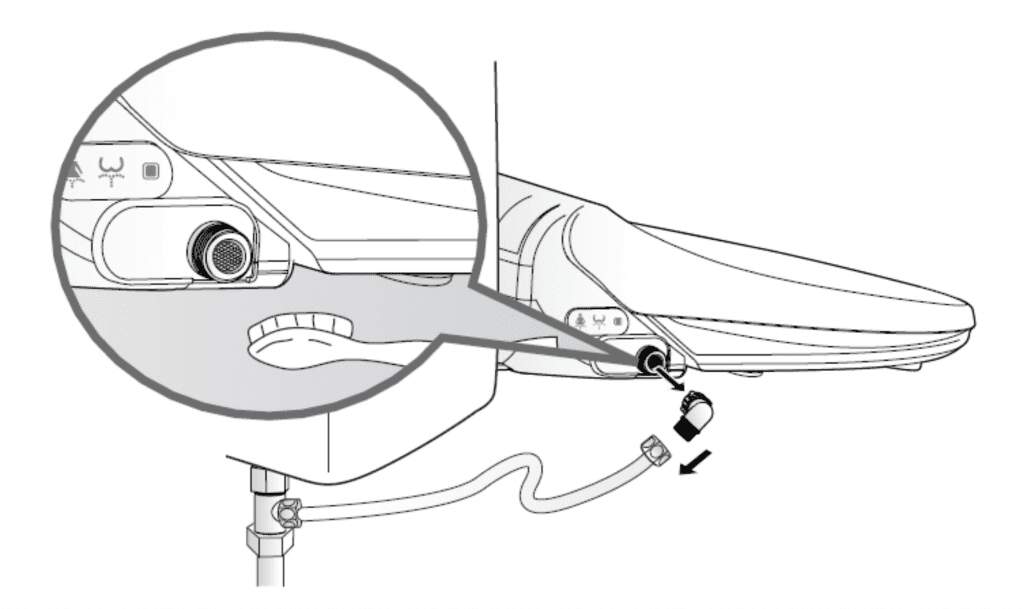
Most bidets come with an in-built mesh filter. This protects the inside of the bidet from unwanted bits of dirt and sediment.
If this filter gets dirty, it can have a big impact on the water flow to your bidet.
The filter is likely located where the water line connects to the bidet.
To clean a bidet mesh filter:
- Turn the water supply to the bidet off and flush the toilet until the tank is empty.
- Run the bidet until no more water comes out (the easiest way to do this is via the self cleaning mode).
- Check your bidet manual to see exactly where the filter is. In this example, the filter is located on the side of the bidet where it connects to the hose.
- Unscrew the water hose that’s supplying the bidet and take the mesh filter out.
- Rinse the mesh filter with water and scrub it with an old toothbrush until it looks clean.
- Clean the area where you insert the mesh filter to get rid of any built up dust.
- Put the mesh filter back and re-screw the hose into the bidet.
- Check the bidet is working and see if the pressure has improved.
If when you’re cleaning the mesh filter it doesn’t seem to be getting any cleaner, it might be beyond repair. In this case, contact the manufacturer and they should be able to send you a replacement.
Another common location for the filter is inside the bidet hose.
Replace any external filters
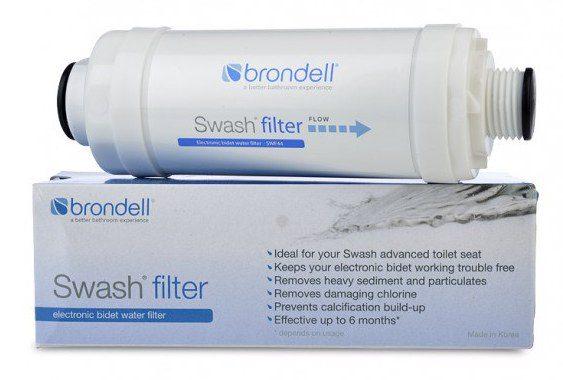
If you’re using an external bidet filter, it may be nearing the end of its life.
If the filter gets too clogged up with particles and hard water deposits, it will start to prevent the water from moving through it fast enough and affect the water pressure of the bidet.
The general advice is to change the filter every 6 months, but the filter may clog faster than that if you live in an area with particularly hard water.
Check your house water pressure
If none of this works, it’s worth testing your home’s overall water pressure. It could be that you just have low water pressure in general.
You can test it yourself at home – so no need to call a plumber. All you need is a pressure gauge (you can buy these cheaply online).
Here’s a good step by step guide to checking your water pressure at home.
Anything below 40 PSI would be considered low, and if it’s below 30 then it is seriously low.
Several things could be causing low water pressure including a partially closed shut off valve, a malfunctioning pressure regulator, clogged pipes, corroded pipes or even a local water failure.
I advise calling a plumber to help you diagnose and resolve the issue.
Get a non-electric bidet (or high pressure electric one)
If you have a brand new bidet and a high house water pressure, it’s likely that the low pressure you’re feeling is just the pressure the bidet produces.
The lower pressure doesn’t necessarily mean the bidet is any less efficient at cleaning, but it can feel like it.
Electric bidets tend to be weaker than non-electric bidets. If you’ve swapped recently it can take some getting used to.
Swapping back to a non-electric bidet might be the answer. Non electric bidets use your homes water pressure, which can be very strong. Electric bidets generate their own pressure, so it’s never going to be as strong.
If you’re set on having an electric bidet but want high pressure, then I strongly recommend you look at the Bio Bidet BB-1000.

It’s got the strongest water pressure of any electric bidet, with a flow rate of 3.2 GPM. Compare this to a Toto model with a flow rate of 0.11 GPM.
The reason it has such a high water pressure for an electric bidet is because it has a small motor in it’s water tank that is uses to generate pressure. The other Bio Bidet models don’t quite reach the pressure of the BB-1000, but they are still above average compared to other electric bidet brands.
Contact the manufacturer
If you’ve tried everything above and nothing has worked, then it’s time to contact the manufacturer. You could have a bidet with defective nozzles, or a blockage you can’t reach.
How much water does a bidet use?
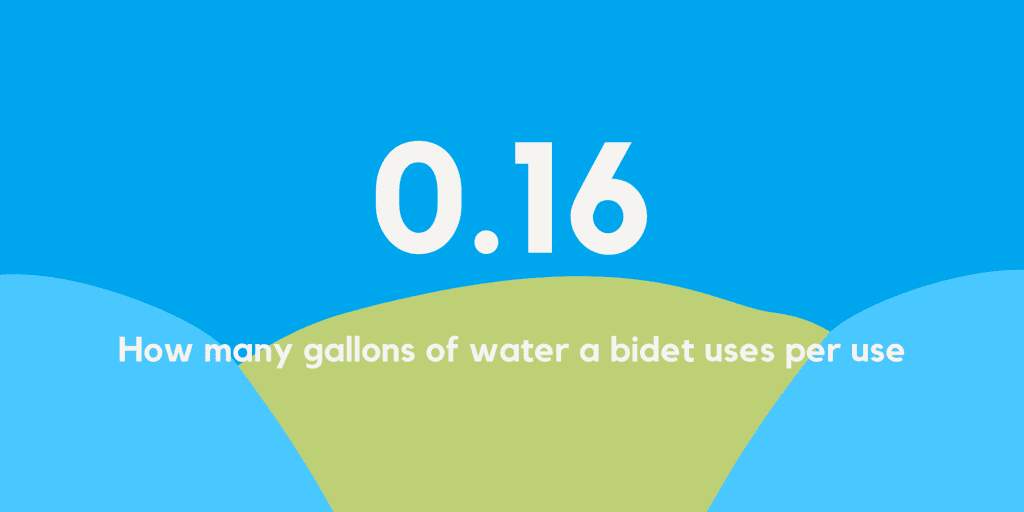
Scientific American says the average bidet will use 0.125 gallons per use. Brondell, who produces electric and non-electric bidets says that it should take a maximum of 0.16 gallons to get clean from a bidet. Of course, the exact amount will vary depending on the water flow rate and how long you run the bidet for.
To verify these numbers, I conducted a little thought experiment.
The Toto C100 is a very popular bidet model. It has a flow rate ranging from 0.08-0.11 GPM.
Say we used it on maximum pressure for 40 seconds. We’d have 0.11 GPM of water flowing through for 40 seconds, which is 0.07 gallons of water. You then have to account for the self-cleaning of the spray wand before and after the wash. This will use another ~30 seconds of water which is 0.05 gallons.
0.07 + 0.05 = 0.12 gallons of water per use.
Another example is the Bio Bidet-2000, which is known for its high-pressure spray. It has a maximum flow rate of 0.185 GPM. Using the same time estimates as above one wash cycle would take up 0.19 gallons of water ( 0.1 gallons to clean you and 0.09 gallons to clean the wand).
0.1 + 0.09 = 0.19 gallons
There are just rough estimates, but the thought experiment does indeed verify what Scientific American and Brondell say.
To give some context to these numbers, the average toilet flush takes 1.6 gallons to flush (older toilets will use more).
Whatever way you cut it, your bidet is going to be using up a minuscule amount of water compared to how much water it takes to produce one toilet roll. One roll uses an estimated 37 gallons of water to produce.
If you want to learn more about how much water bidets save VS toilet paper, check out my guide on Are Bidets Eco-Friendly?
